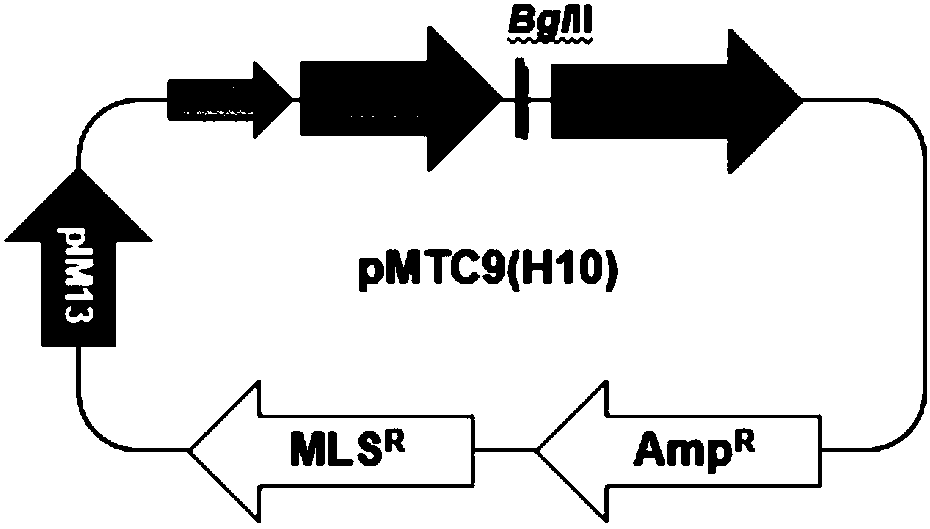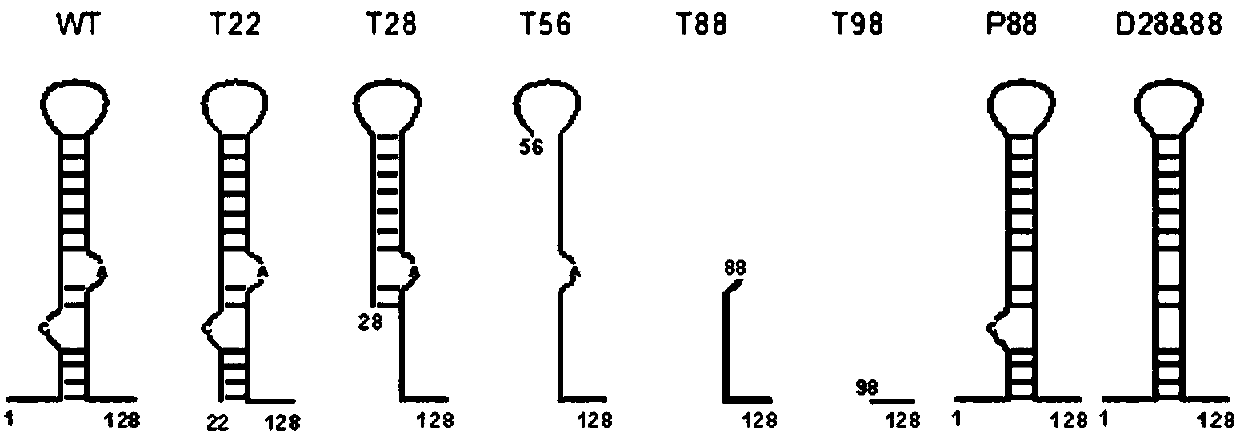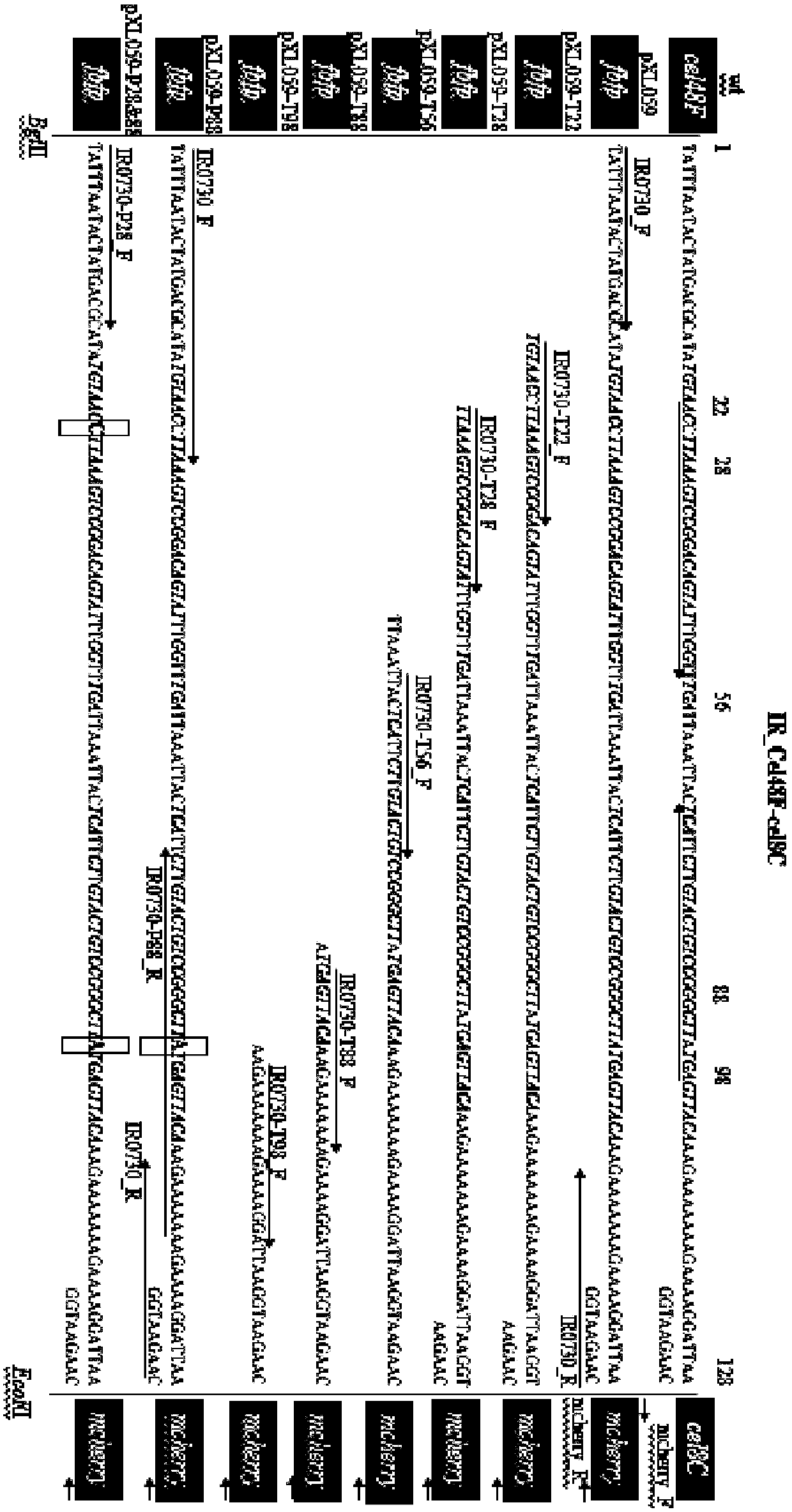Method for controlling expression ratio of different genes through prokaryotic cell post-transcriptional level
A level control and gene expression technology, applied in the field of gene expression regulation and genetic engineering, can solve the problems of inability to finely regulate the level of gene expression, increase the complexity of the reaction process, increase the production cost, etc.
- Summary
- Abstract
- Description
- Claims
- Application Information
AI Technical Summary
Problems solved by technology
Method used
Image
Examples
Embodiment 1
[0041] Example 1 - Construction of a reporter system for dual fluorescent proteins
[0042] 1) Cell culture
[0043] The bacterial strains and plasmids involved in the following are listed in Table 1. Escherichia coli DH5α was cultured at 37 degrees in common LB medium. The main purpose of its culture is to facilitate the construction and replication of plasmids, so that more plasmids can be used in the transformation of Clostridium cellulolyticum.
[0044] Then, the plasmids in Table 1 were introduced into Escherichia coli by conventional means, and the Escherichia coli containing the plasmids were respectively cultured in LB medium added with 100 μg / ml ampicillin until the mid-late logarithmic period.
[0045] Clostridium cellulolyticus is a strictly anaerobic cellulose-degrading bacterium. The cells are cultured in a Hengate roller tube at a constant temperature of 35 degrees. The culture medium is DCB-1, and 0.0005% resazurin is used as oxygen. indicator.
[0046] Then, ...
Embodiment 2
[0057] Embodiment 2——Determination of endoribonuclease recognition cleavage site
[0058] 1) Design a neck loop structure containing endoribonuclease recognition cleavage sites
[0059] The neck ring structure is a neck ring structure containing AT-rich region and bubbling. Its gene sequence is: TATTTAATACTATGACGCATATGTAACCTTAAAGTCCGGACAGTATTTGGTTTGATTAAATTACTCATTCTTGTACTGTCCGGGCTTATGAGTTACAAAGAAAAAAAGAAAAGGATTAAGGTAAGAAC, named WT. Through different degrees of truncation mutations, they were named as T22, T28, T56, T88, and T98, and a series of sequences were synthesized that deleted the AT-rich region, bubbling region, and neck loop structure at the 5' end. The base A at the 3' end of the unpaired bubbling region was deleted to construct a point mutation neck loop structure P88. The base A at the 3' end and the base C at the 5' end of the unpaired bubbling region were simultaneously deleted to construct a point mutation neck loop structure D28&88 (such as Figure 2A shown)...
Embodiment 3
[0062] Example 3—Neck ring structure and function identification
[0063] 1) Real-time quantitative PCR analysis of the effects of different sequences on the transcription of fbfp and mCherry
[0064] From the RNA extracted respectively from a series of Clostridium cellulolyticum transformants obtained in Example 2, and after reverse transcription of cDNA, the RNA polymerase subunit (Ccel_0312) was used as an internal reference gene by 480II (Roche) was used for fluorescent quantitative PCR to compare the transcription levels of fbfp, mCherry, and the spacer IR between them in different transformants (such as image 3 ).
[0065] qRT-PCR results showed that in the dual fluorescent protein reporter system (Control) without adding any sequence, the transcript abundances of fbfp, mCherry, and the spacer IR between them were basically the same, indicating that fbfp and mCherry belonged to the same transcript unit. But when the designed complete sequence (WT) was introduced be...
PUM
 Login to View More
Login to View More Abstract
Description
Claims
Application Information
 Login to View More
Login to View More - R&D
- Intellectual Property
- Life Sciences
- Materials
- Tech Scout
- Unparalleled Data Quality
- Higher Quality Content
- 60% Fewer Hallucinations
Browse by: Latest US Patents, China's latest patents, Technical Efficacy Thesaurus, Application Domain, Technology Topic, Popular Technical Reports.
© 2025 PatSnap. All rights reserved.Legal|Privacy policy|Modern Slavery Act Transparency Statement|Sitemap|About US| Contact US: help@patsnap.com



